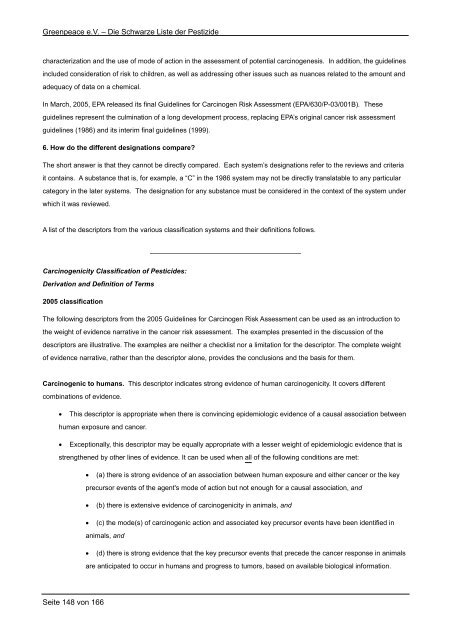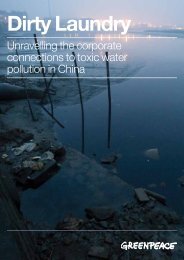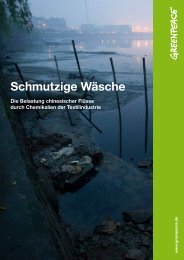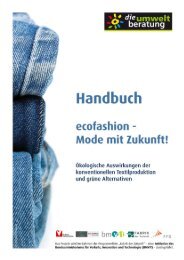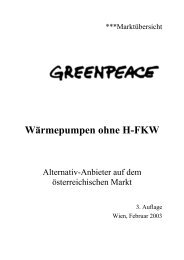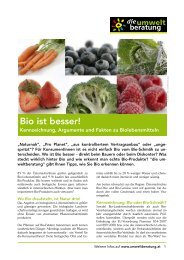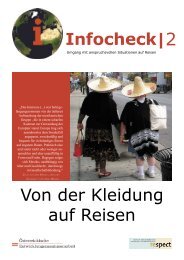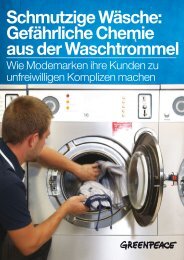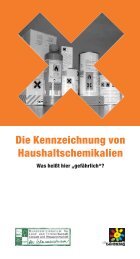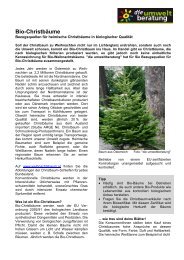Die Schwarze Liste der Pestizide - Greenpeace
Die Schwarze Liste der Pestizide - Greenpeace
Die Schwarze Liste der Pestizide - Greenpeace
Erfolgreiche ePaper selbst erstellen
Machen Sie aus Ihren PDF Publikationen ein blätterbares Flipbook mit unserer einzigartigen Google optimierten e-Paper Software.
<strong>Greenpeace</strong> e.V. – <strong>Die</strong> <strong>Schwarze</strong> <strong>Liste</strong> <strong>der</strong> <strong>Pestizide</strong><br />
characterization and the use of mode of action in the assessment of potential carcinogenesis. In addition, the guidelines<br />
included consi<strong>der</strong>ation of risk to children, as well as addressing other issues such as nuances related to the amount and<br />
adequacy of data on a chemical.<br />
In March, 2005, EPA released its final Guidelines for Carcinogen Risk Assessment (EPA/630/P-03/001B). These<br />
guidelines represent the culmination of a long development process, replacing EPA’s original cancer risk assessment<br />
guidelines (1986) and its interim final guidelines (1999).<br />
6. How do the different designations compare?<br />
The short answer is that they cannot be directly compared. Each system’s designations refer to the reviews and criteria<br />
it contains. A substance that is, for example, a “C” in the 1986 system may not be directly translatable to any particular<br />
category in the later systems. The designation for any substance must be consi<strong>der</strong>ed in the context of the system un<strong>der</strong><br />
which it was reviewed.<br />
A list of the descriptors from the various classification systems and their definitions follows.<br />
Carcinogenicity Classification of Pesticides:<br />
Derivation and Definition of Terms<br />
2005 classification<br />
The following descriptors from the 2005 Guidelines for Carcinogen Risk Assessment can be used as an introduction to<br />
the weight of evidence narrative in the cancer risk assessment. The examples presented in the discussion of the<br />
descriptors are illustrative. The examples are neither a checklist nor a limitation for the descriptor. The complete weight<br />
of evidence narrative, rather than the descriptor alone, provides the conclusions and the basis for them.<br />
Carcinogenic to humans. This descriptor indicates strong evidence of human carcinogenicity. It covers different<br />
combinations of evidence.<br />
This descriptor is appropriate when there is convincing epidemiologic evidence of a causal association between<br />
human exposure and cancer.<br />
Exceptionally, this descriptor may be equally appropriate with a lesser weight of epidemiologic evidence that is<br />
strengthened by other lines of evidence. It can be used when all of the following conditions are met:<br />
Seite 148 von 166<br />
(a) there is strong evidence of an association between human exposure and either cancer or the key<br />
precursor events of the agent's mode of action but not enough for a causal association, and<br />
(b) there is extensive evidence of carcinogenicity in animals, and<br />
(c) the mode(s) of carcinogenic action and associated key precursor events have been identified in<br />
animals, and<br />
(d) there is strong evidence that the key precursor events that precede the cancer response in animals<br />
are anticipated to occur in humans and progress to tumors, based on available biological information.


